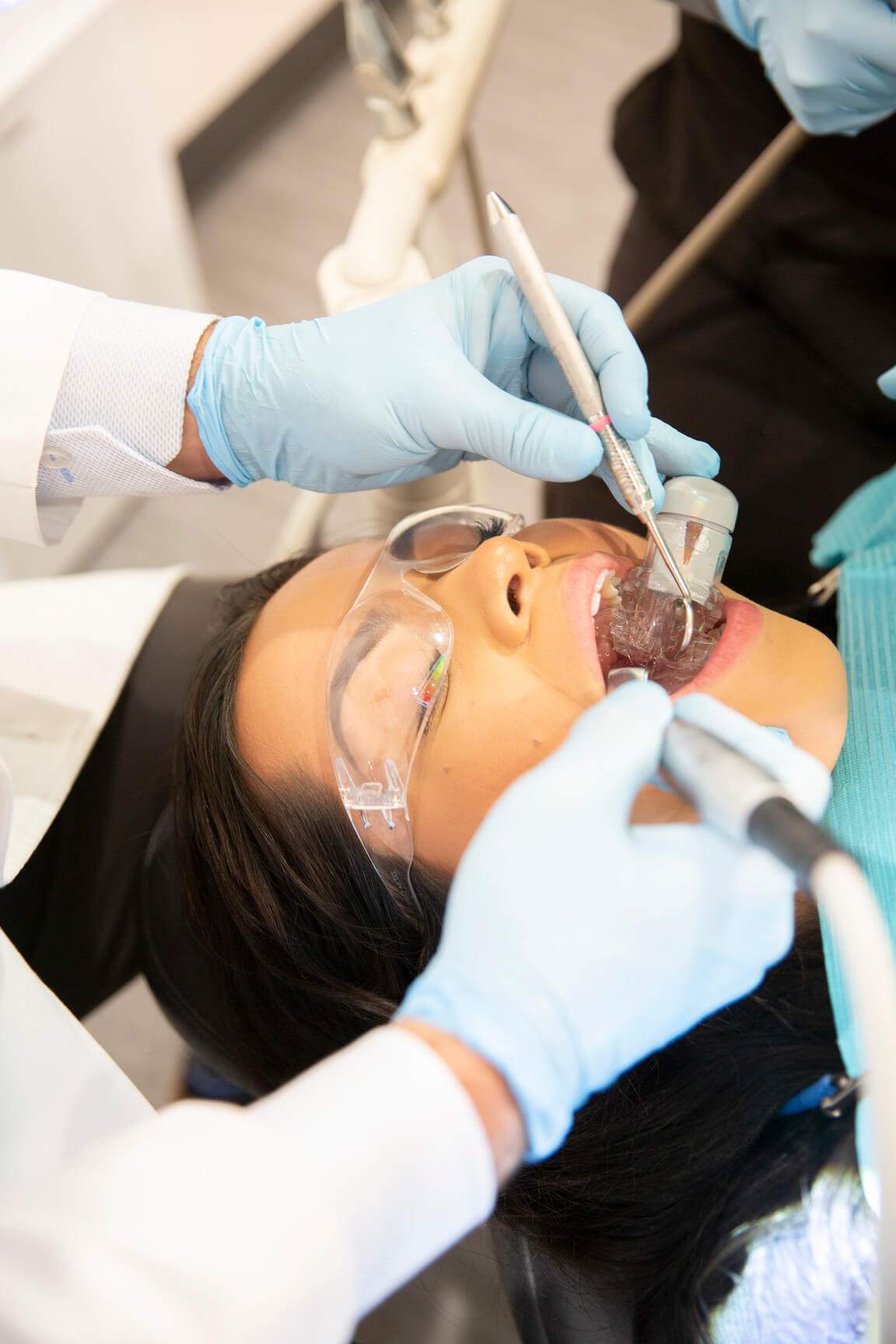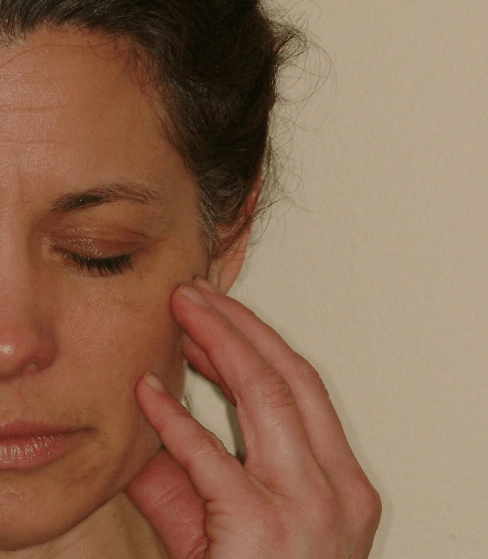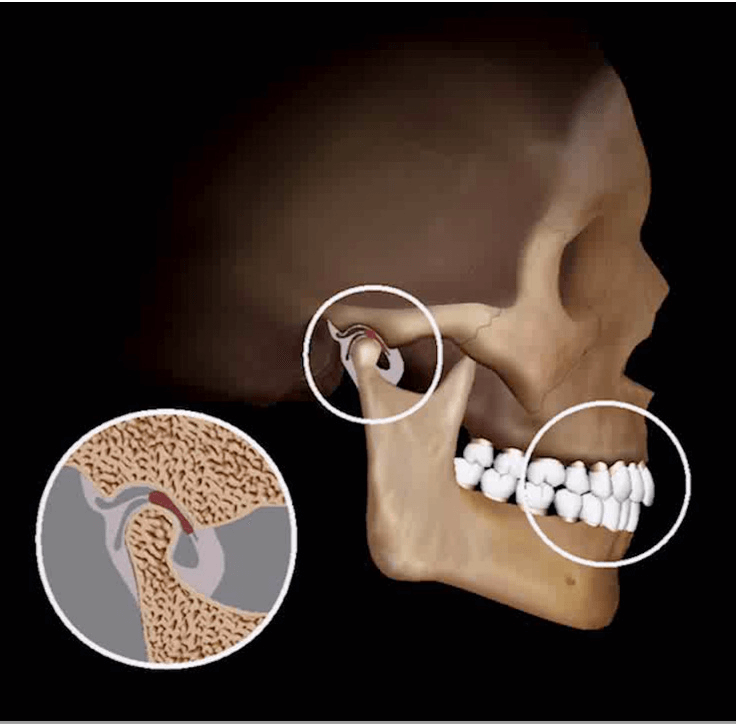
Treatment of TMJ (TMD)
A jaw joint problem arises when the temporomandibular joint, or “TMJ” connecting your lower jaw to the base of your skull becomes painful and is unable to function normally. People with jaw joint problems may not be able to open or close their mouths fully or chew hard, sticky foods. They may also experience painful clicking or popping when they attempt to open and close their mouth.

Facial, muscle, or joint pain

Tooth position closely related to joint position
What causes a Jaw Joint Problem?
A jaw joint problem is caused by the components of the TMJ changing shape and becoming unstable when the joint moves. A small cushioning disc sits between your jaw bone and the base of your skull. Sometimes
the ligaments holding this disc in place become stretched and the disc pops out of place; either in front of the jaw bone or behind it.
The risk factors for a jaw joint problem are:
- Trauma to the jaw
- An unbalanced bite
- Day or night time tooth grinding
- Being double-jointed
- Arthritis in other joints in the body
- Lifestyle choices that require repetitive or prolonged opening of your mouth such as singing
What can I do to minimize my risk of future Jaw Joint Problems?
What can I do to minimize my risk of future jaw joint problems? The first step in addressing a jaw joint problem is to have your dentist evaluate your individual risk factors and customize an appropriate Management Protocol for you.
Your Jaw Joint Management Protocol may include:
- Treating an unbalanced bite
- Managing tooth grinding
- Decreasing stress to the jaw through the use of
– Oral splints
– Medication
– Lifestyle counseling
- Increasing jaw mobility through the use of
– Jaw exercises
– Medication
Your Jaw Joint Management Protocol has important steps that you must carry out on your own to decrease your risk of future jaw joint problems.
What will happen if I choose to do nothing about my Jaw Joint Problem?
Ignoring a jaw joint problem may lead to chronic, debilitating pain and an inability to function normally when chewing and speaking.
Patient Feedback
EXCELLENTTrustindex verifies that the original source of the review is Google. Great staff and care at Bend Dental Wellness!Trustindex verifies that the original source of the review is Google. We have been going here for 5 years. We really enjoy how kind all of the staff are. Up to date modern tools.Trustindex verifies that the original source of the review is Google. I had an emergency and they found a way to get me in to be seen the same day. The staff and Dr Quigley were helpful and professional. I’ve been going to Bend Dental Wellness for four years and it has always been professional and friendly.Trustindex verifies that the original source of the review is Google. Dr. Blake Q and his staff are very friendly and competent. I did choose this practice because of his 'better' practices with dental care. And I've been very satisfied with my dental care for the past 3+years and will continue. Had a cleaning today with Mara and she was very gentle and thorough.Trustindex verifies that the original source of the review is Google. The service was excellent, both my teeth cleaning and discussion of possible future needs.
Request An Appointment
Need help? Contact us!





